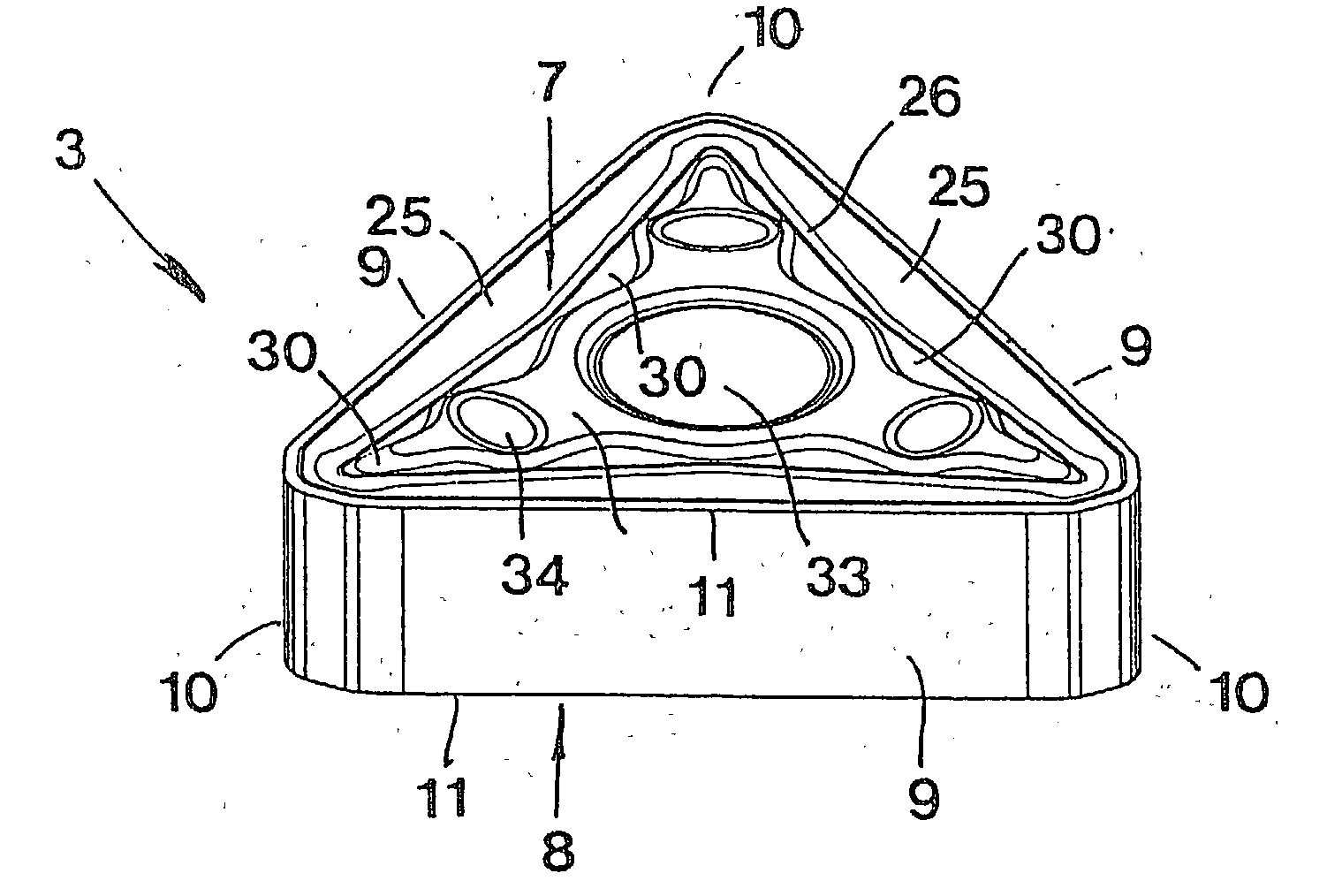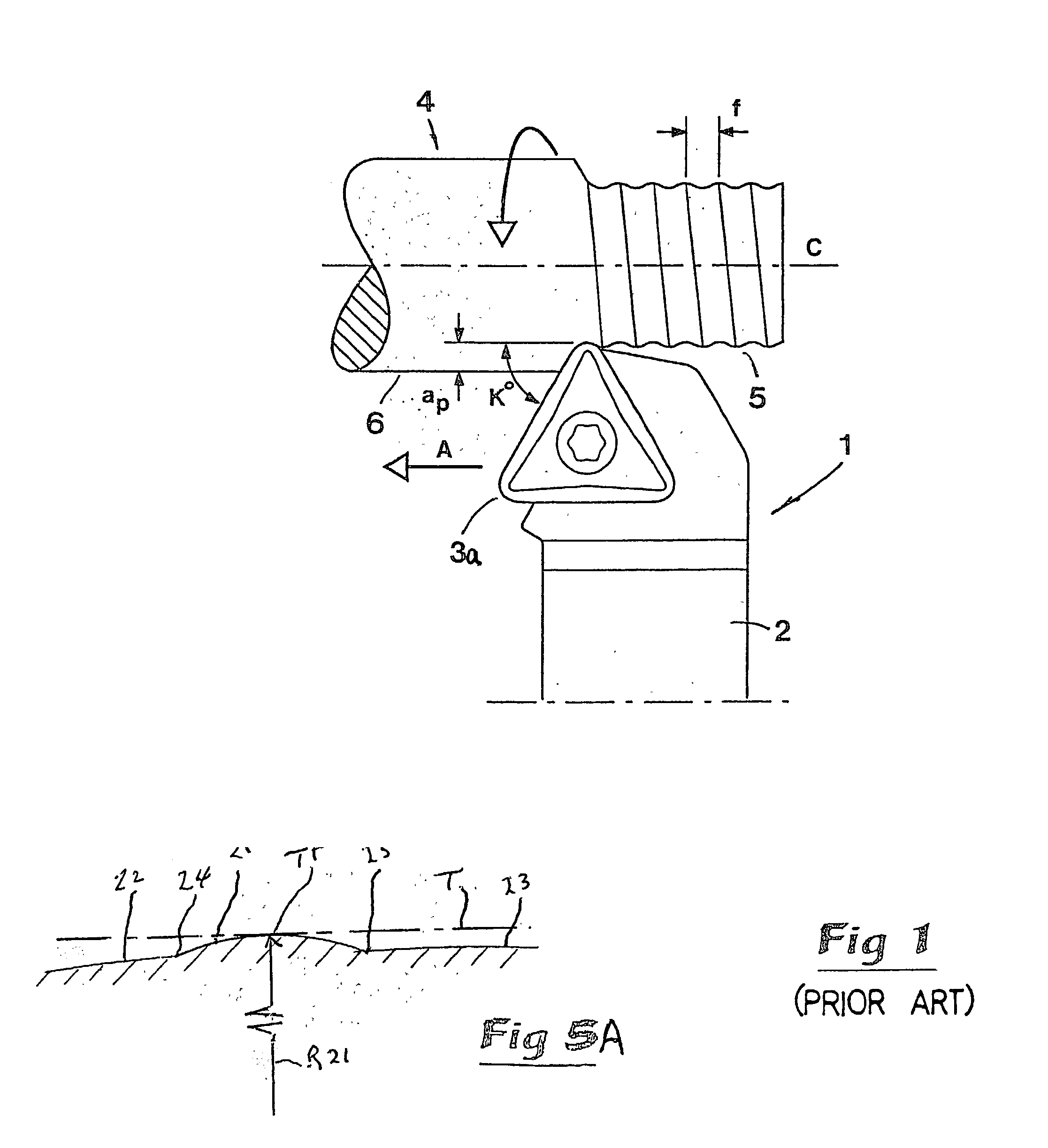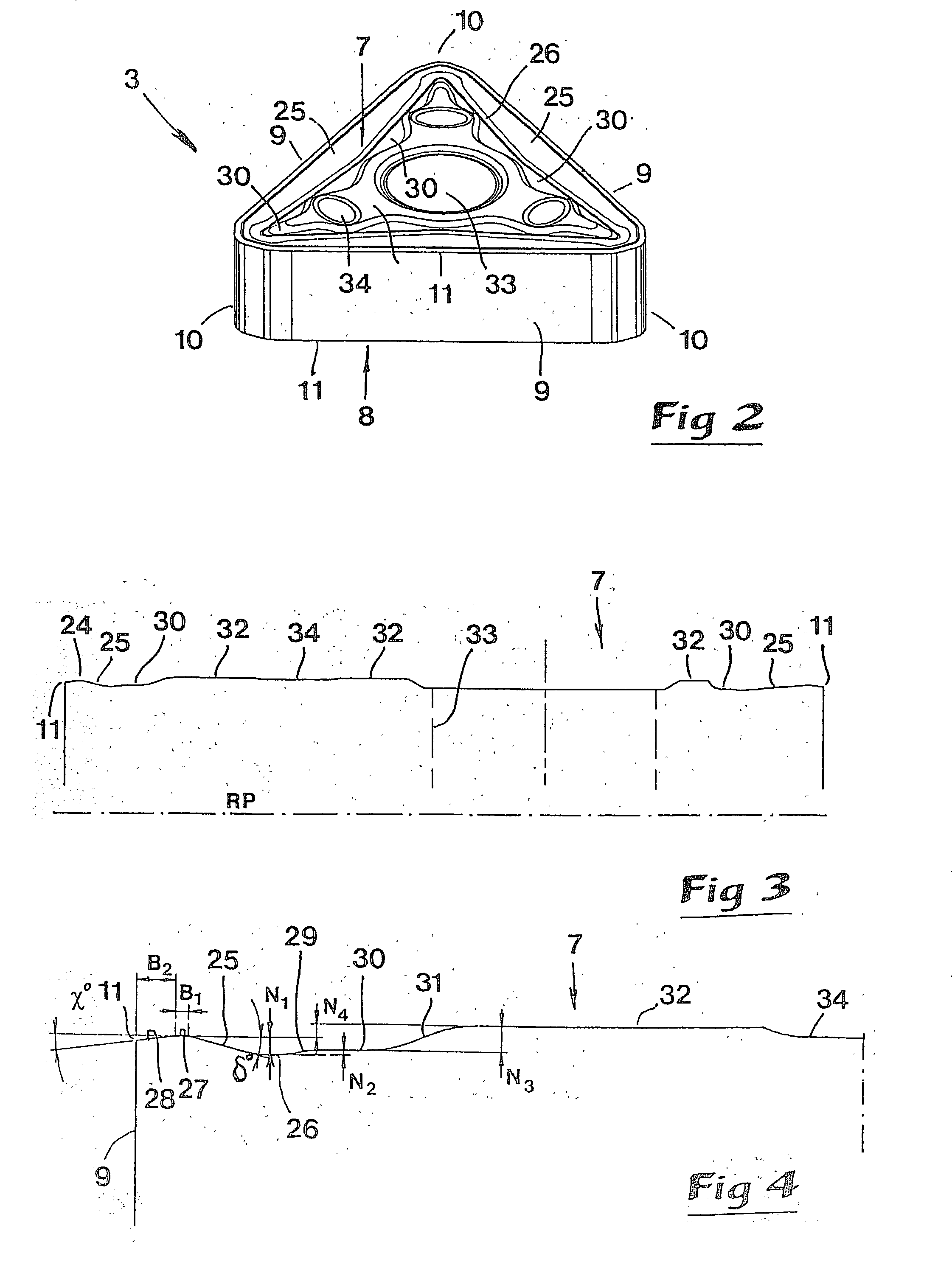Cutting insert for chip removing machining
a cutting insert and chip technology, applied in the direction of cutting inserts, shaping cutters, manufacturing tools, etc., can solve the problems of inability to pre-determine the position of the actual tangent point along the surface smoothening edge segment, vibration and detrimental heat generation,
- Summary
- Abstract
- Description
- Claims
- Application Information
AI Technical Summary
Benefits of technology
Problems solved by technology
Method used
Image
Examples
Embodiment Construction
[0030] In FIG. 1, a turning tool is shown schematically during machining of a workpiece. The machining in this case consists of longitudinal turning. The tool is in its entirety designated 1 and includes a bar or holder 2 as well as a replaceable cutting insert 3a. The workpiece 4 is rotatable around a geometric axis C. A machined, cylindrical surface 5 on the workpiece typically has wave formations, shown in drastically exaggerated scale in FIG. 1, which detract from the surface finish. The distance between the tops of these wave formations is a function of the feeding f of the cutting insert 3a, which is measured in mm / revolution. Furthermore, a.sub.p designates the cutting depth that constitutes the radial difference between the machined surface 5 and the unmachined surface 6, as measured perpendicularly to the feeding direction of the tool (see the arrow A). The side angle K.degree. is the angle between the main cutting edge of the cutting insert and the feeding direction.
[0031]...
PUM
| Property | Measurement | Unit |
|---|---|---|
| acute angle | aaaaa | aaaaa |
| distance | aaaaa | aaaaa |
| angle | aaaaa | aaaaa |
Abstract
Description
Claims
Application Information
 Login to View More
Login to View More - R&D
- Intellectual Property
- Life Sciences
- Materials
- Tech Scout
- Unparalleled Data Quality
- Higher Quality Content
- 60% Fewer Hallucinations
Browse by: Latest US Patents, China's latest patents, Technical Efficacy Thesaurus, Application Domain, Technology Topic, Popular Technical Reports.
© 2025 PatSnap. All rights reserved.Legal|Privacy policy|Modern Slavery Act Transparency Statement|Sitemap|About US| Contact US: help@patsnap.com



